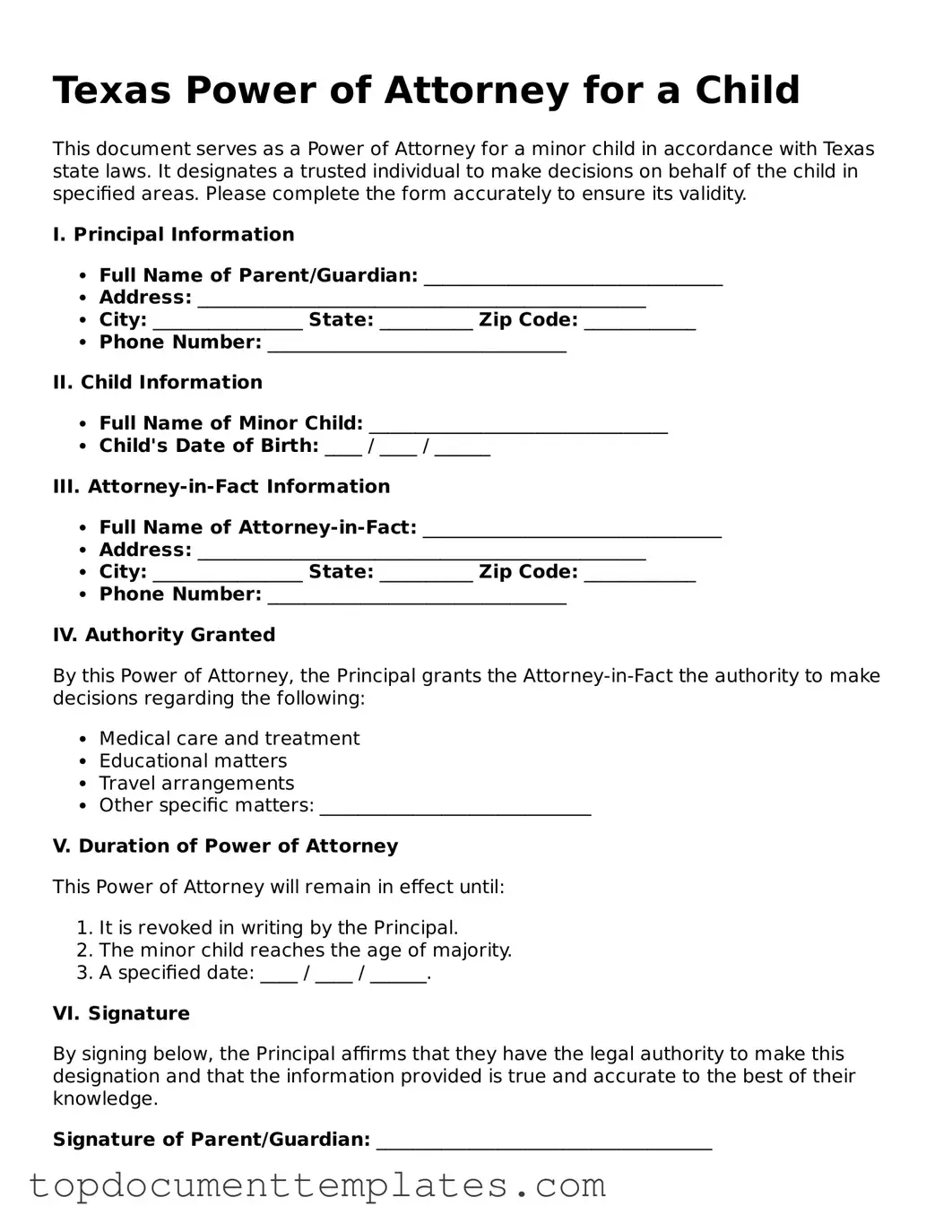In Texas, the Power of Attorney for a Child form serves as a vital tool for parents and guardians who need to delegate authority for the care and welfare of their child. This legal document allows a designated individual, often a relative or trusted friend, to make decisions on behalf of the child in various situations, such as medical emergencies, educational matters, and day-to-day care. By utilizing this form, parents can ensure that their child is well taken care of even in their absence, whether due to travel, work commitments, or unforeseen circumstances. The form is designed to be straightforward, requiring essential information such as the child's name, the name of the agent, and the specific powers being granted. It is crucial to understand that this Power of Attorney is not permanent; it can be revoked or modified as needed, providing flexibility for parents. Additionally, the document must be signed in front of a notary public to ensure its validity. Understanding the nuances of this form can empower parents to make informed decisions that prioritize their child's well-being.
